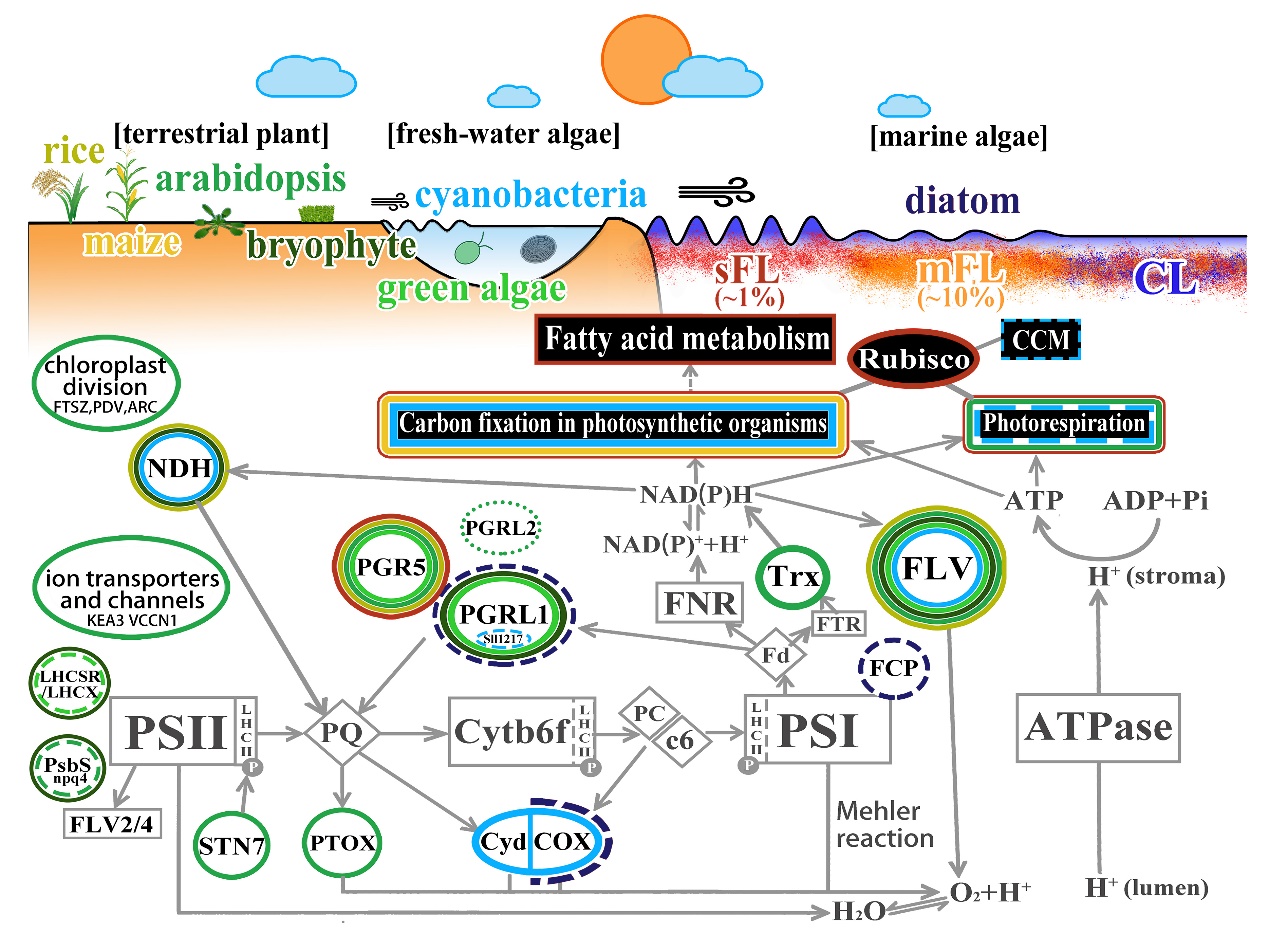
A research team led by Prof. WANG Guangce from the Institute of Oceanology of the Chinese Academy of Sciences (IOCAS) reported the molecular mechanism of marine diatoms in response to fluctuating light conditions.
The study was published in Plant Physiology on Sept. 23.
Cultivation of marine diatoms in the laboratory is under constant light condition, but the light environment in the ocean is not constant but mainly fluctuating.
"Actually, marine diatoms have a strong adaptability to the environment and generally dominate in upwelling and turbulence systems," said ZHOU Lu, first author of the study. These environments are unstable, in which light intensity changes dramatically. Diatoms need to respond quickly to the fluctuating light environment to maintain their growth.
The researchers used methods involving bioinformatics, molecular biology, biochemistry and physiology to reveal the molecular mechanism of marine diatoms responding to fluctuating light.
They found that marine diatoms could use fluctuating light stably and efficiently in comparison with dinoflagellates. Proton Gradient Regulation proteins (PGRL1 and PGR5) in the photosynthetic thylakoid membrane of marine diatoms are extremely sensitive to the fluctuating light (this feature is obviously different from that of land plants and freshwater algae), and both play important roles in marine diatoms responding to fluctuating light environment.
Moreover, the excessive accumulation of PGRL1 inhibits the efficiency of photosystem II (PSII) under fluctuating light. This important discovery has changed the traditional perception that PGRL1 just plays a protection role around photosystem I (PSI).
"We also found that the carbon fixation capacity and lipid accumulation of marine diatoms increased under severe fluctuating light condition," said GAO Shan, the other first author of the study.
"The above results will not only help us fully understand the biological characteristics of marine diatoms, but also provide new insights into high light efficiency breeding and lipid yield improvement of economic diatoms in the future," said Prof. WANG.

Acclimation of marine diatoms to fluctuating light conditions (Image by IOCAS)

86-10-68597521 (day)
86-10-68597289 (night)

52 Sanlihe Rd., Xicheng District,
Beijing, China (100864)

